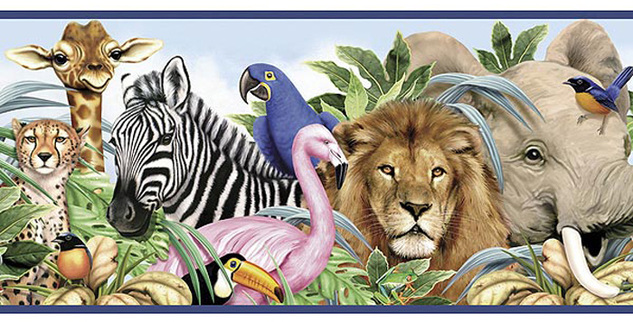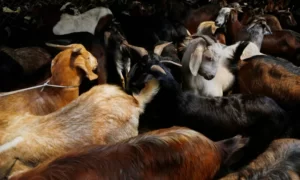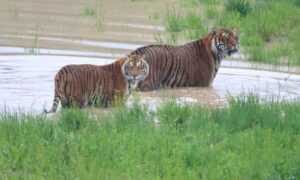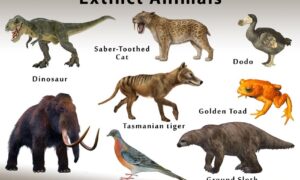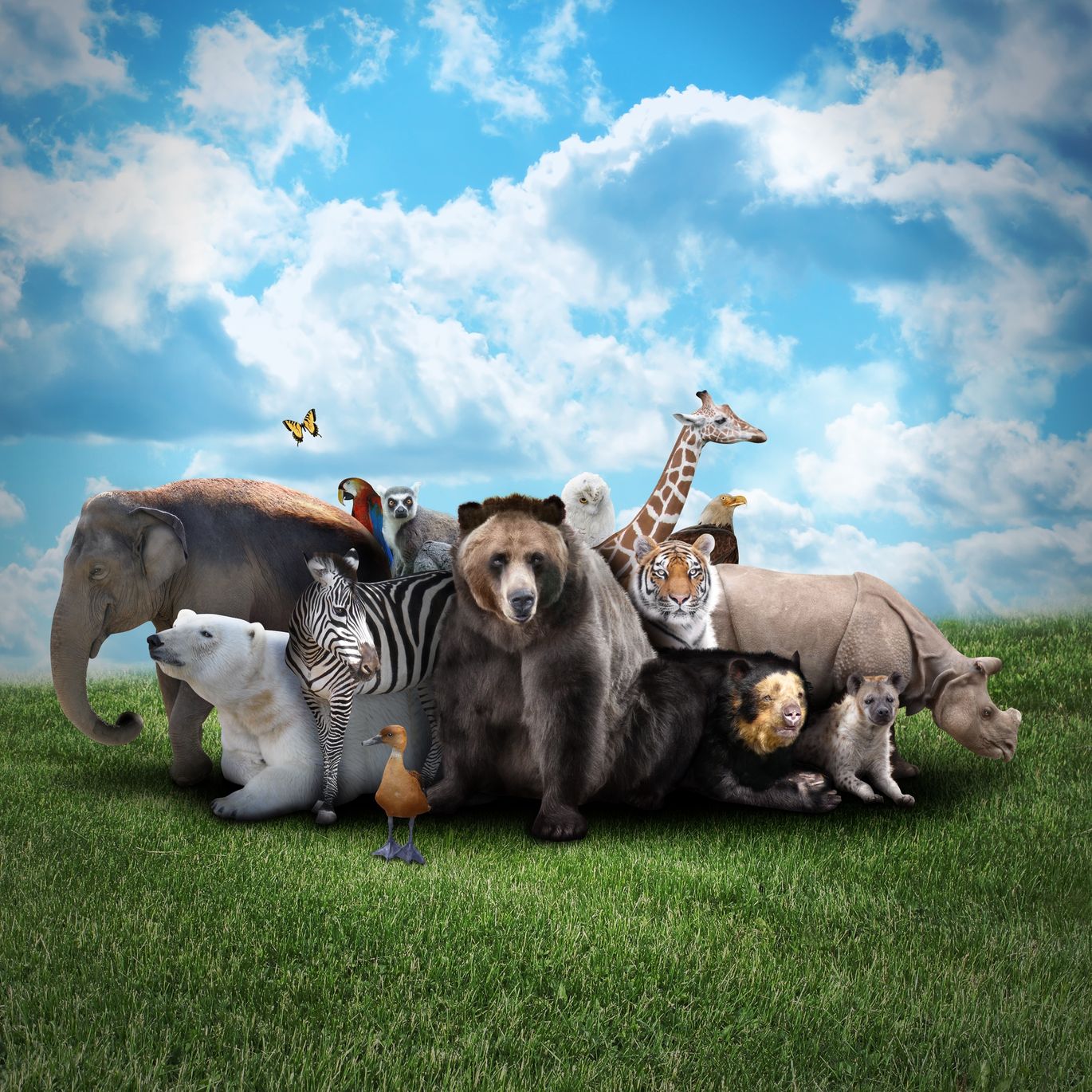Kingdom Animalia – Exploring the Diversity and Wonders of the Animal Kingdom
The animal kingdom, scientifically referred to as Kingdom Animalia, encompasses an astonishing array of living organisms. From the tiny insects that buzz around us to the majestic whales that roam the oceans, animals captivate us with their diversity and remarkable abilities. In this article, we will delve into the intricacies of the animal kingdom, exploring its classification, diversity, adaptations, ecological roles, interactions with humans, and fascinating behaviors.
1. Introduction
The animal kingdom represents a vast group of multicellular organisms that inhabit diverse environments across the globe. Animals are characterized by their ability to move, consume organic matter, and reproduce sexually. With over a million known species and countless more yet to be discovered, animals display an extraordinary range of forms, sizes, and lifestyles.
2. What is the Kingdom Animalia?
The Kingdom Animalia constitutes one of the five major kingdoms of life, along with plants, fungi, protists, and prokaryotes. Animals are eukaryotic organisms, meaning their cells contain a nucleus and membrane-bound organelles. They are also heterotrophs, relying on external food sources for energy.
3. Classification and Taxonomy of the Animal Kingdom
In the animal kingdom, organisms are classified based on their characteristics and evolutionary relationships. The hierarchical classification system includes phylum, class, order, family, genus, and species. Let’s explore some of the major phyla and classes within the animal kingdom.
3.1 Phylum Chordata
The phylum Chordata comprises animals with a notochord, a dorsal hollow nerve cord, and pharyngeal slits at some stage of their life cycle. Within this phylum, we find diverse classes such as Mammalia, Aves, and Reptilia.
3.1.1 Class Mammalia
Mammals are warm-blooded vertebrates characterized by mammary glands, which produce milk for their offspring. They possess hair or fur and have a highly developed brain. Humans, elephants, and dolphins are just a few examples of mammals.
3.1.2 Class Aves
Birds belong to the class Aves and are known for their feathers, beaks, and ability to fly. They exhibit remarkable adaptations for flight and are found in various habitats worldwide. Examples of birds include eagles, penguins, and parrots.
3.1.3 Class Reptilia
Reptiles are cold-blooded animals that lay eggs and have scaly skin. They are well adapted to diverse environments and include reptiles such as snakes, turtles, and crocodiles.
3.2 Phylum Arthropoda
The phylum Arthropoda is the largest phylum in the animal kingdom and includes organisms with jointed appendages and exoskeletons. Some of the prominent classes within this phylum are Insecta, Arachnida, and Crustacea.
3.2.1 Class Insecta
Insects are the most abundant animals on Earth, and they play crucial roles in ecosystems as pollinators, decomposers, and prey. Bees, butterflies, and ants are notable examples of insects.
3.2.2 Class Arachnida
Arachnids, such as spiders, scorpions, and ticks, belong to the class Arachnida. They have eight legs and two body segments, and most species are predatory.
3.2.3 Class Crustacea
Crustaceans include familiar creatures like crabs, lobsters, and shrimp. They are characterized by their hard exoskeletons and two pairs of antennae.
3.3 Other Phyla and Classes
Beyond Chordata and Arthropoda, the animal kingdom encompasses numerous other phyla and classes. These include Mollusca (snails, clams, and octopuses), Annelida (segmented worms), and Echinodermata (starfish and sea urchins), among others.
4. Diversity of Animal Species (Kingdom Animalia)
Animals exhibit an astounding diversity in their forms, behaviors, and ecological roles. The animal kingdom can be broadly categorized into vertebrates and invertebrates.
4.1 Vertebrates
Vertebrates are animals with a backbone or vertebral column. They include mammals, birds, reptiles, amphibians, and fish. Vertebrates have evolved diverse adaptations that allow them to occupy different niches and environments.
4.2 Invertebrates
Invertebrates, on the other hand, lack a backbone. They represent the vast majority of animal species and encompass groups such as insects, spiders, mollusks, worms, and jellyfish. Invertebrates play crucial roles in ecosystems and display remarkable adaptations for survival.
5. Adaptations and Survival Strategies
Animals have evolved a plethora of adaptations and survival strategies that enable them to thrive in various habitats. These adaptations can be structural or behavioral in nature.
5.1 Structural Adaptations
Structural adaptations refer to physical traits that help animals survive and reproduce. Examples include the wings of birds for flight, the streamlined bodies of fish for swimming, and the long necks of giraffes for reaching leaves high in trees.
5.2 Behavioral Adaptations
Behavioral adaptations involve actions and behaviors that aid an animal’s survival. For instance, migration allows animals to move to more favorable environments, while hibernation helps them conserve energy during harsh seasons. Social behaviors, such as cooperation and communication, also contribute to survival.
6. Ecological Roles of Animals
Animals play vital roles in ecosystems, contributing to the balance and functioning of natural environments. Let’s explore some of the key ecological roles animals fulfill.
6.1 Pollinators
Many animals, including bees, butterflies, and bats, serve as pollinators. They transfer pollen between flowers, facilitating plant reproduction and the production of fruits and seeds. Without pollinators, many plant species and the animals that depend on them would be at risk.
6.2 Decomposers
Certain animals, such as scavengers and detritivores, play essential roles in decomposition. They break down dead organic matter, recycling nutrients back into the ecosystem. Examples of decomposers include vultures, earthworms, and fungi.
6.3 Predators and Prey
Predators control populations of prey species, preventing them from becoming overabundant. This regulation helps maintain the balance of ecosystems and ensures the survival of various species. Predatory animals like lions, wolves, and sharks are key players in these interactions.
7. Interactions with Humans
Throughout history, animals have had profound interactions with humans, shaping our cultures, economies, and daily lives.
7.1 Domestication and Companion Animals
Humans have domesticated numerous animal species, such as dogs, cats, and livestock, for various purposes. Domestication has provided us with companionship, food sources, transportation, and assistance in agricultural activities.
7.2 Animal Conservation
With increasing awareness of biodiversity loss and habitat destruction, conservation efforts are crucial to protect animal species and their habitats. Conservation initiatives aim to prevent extinction, restore ecosystems, and promote sustainable practices that benefit both animals and humans.
8. Incredible Animal Abilities and Behaviors
Animals exhibit extraordinary abilities and behaviors that continue to astonish scientists and enthusiasts alike.
8.1 Camouflage and Mimicry
Many animals have developed camouflage and mimicry as defense mechanisms or hunting strategies. Through coloration, patterns, and body shapes, they blend into their surroundings or imitate other species to deceive predators or prey.
8.2 Migration
Migration is a remarkable behavior observed in many animal species. From birds that undertake long-distance journeys to whales that travel thousands of miles, migration allows animals to find suitable breeding grounds, feeding areas, or avoid harsh environmental conditions.
8.3 Echolocation
Bats, dolphins, and certain other animals employ echolocation to navigate and locate prey. By emitting sounds and interpreting the echoes that bounce back, they can construct detailed mental maps of their surroundings, even in complete darkness.
9. Ethical Considerations and Animal Welfare
As we explore the wonders of the animal kingdom, it’s essential to consider ethical considerations and animal welfare. Many organizations and individuals advocate for the ethical treatment of animals, promoting responsible practices in research, farming, and entertainment.
10. Conclusion
The animal kingdom, Kingdom Animalia, is a realm of awe-inspiring diversity and wonders. From the microscopic to the colossal, animals have conquered land, air, and water, adapting and evolving over millions of years. By understanding and appreciating the intricacies of the animal kingdom, we can nurture a deeper connection with the natural world and strive to protect its richness for future generations.
FAQs
11.1 How many animal species are there in the world?
Estimating the exact number of animal species is challenging, but it is believed that there are millions of animal species on Earth. However, many species are yet to be discovered and documented.
11.2 What is the largest animal in the world?
The blue whale holds the title for being the largest animal ever known to have existed. These magnificent creatures can reach lengths of up to 100 feet and weigh over 180 metric tons.
11.3 Can animals communicate with each other?
Yes, animals communicate with each other using various methods, including vocalizations, body language, chemical signals, and visual displays. Communication plays a vital role in establishing social bonds, warning of danger, and coordinating behaviors within a species.
11.4 How do animals defend themselves?
Animals employ various defense mechanisms to protect themselves from predators. Some use camouflage to blend into their surroundings, while others have physical adaptations like sharp claws, venom, or defensive behaviors such as fleeing or playing dead.
11.5 Why is animal conservation important?
Animal conservation is crucial to preserving biodiversity, maintaining healthy ecosystems, and protecting endangered species from extinction. It ensures the sustainable use of natural resources and promotes the interconnectedness of all life on Earth.
Read More:Animal Classifications on the Basis of Habitat

